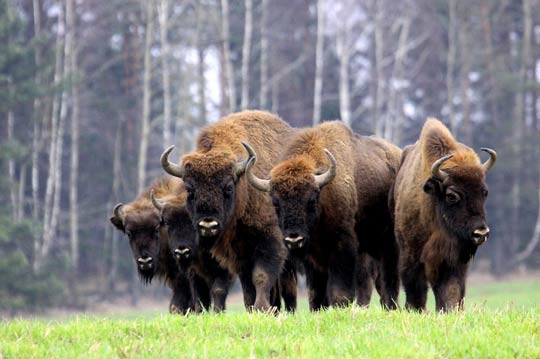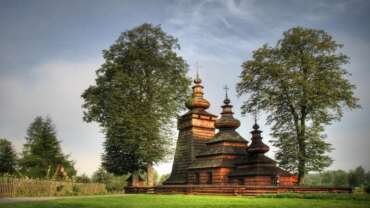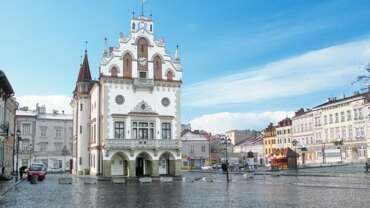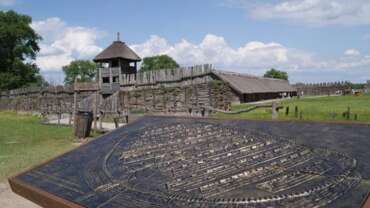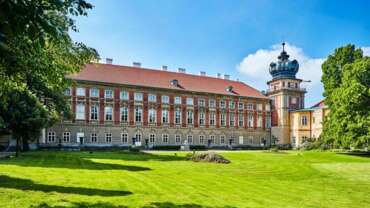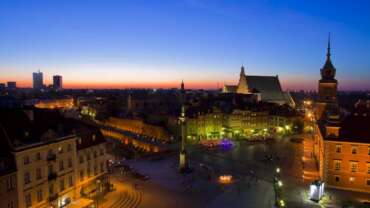National Park & Outdoors in Poland
Travelers from around the world flock to Poland for a variety of reasons. While the cities are a major draw, Polish national parks are also an exceptional reason to visit the country. The twenty-three protected areas represent the best scenery and outdoor exploration opportunities. Whether a visitor wants to hike in seclusion, spot wildlife in their natural habitats or get to know the country’s history, the parks offer an incredible way to pursue one’s passion. Each one is remarkable but the most appealing and popular ones are genuine wonders and make a list of the must-see for nature-lovers.
Along the Baltic Coast is Slowinski National Park that preserves the system of seaside lakes, peat bogs, meadows, woods and conserves unique moving dunes belt. Guests can follow over 105 miles of paved hiking paths to discover all the park’s treasures.
Bialowieza National Park, listed by the UNESCO as a World Heritage, is one of the last remaining primeval forests in Europe. The area is home to the largest population of European bison in the world. Hikers may spot them along with wild boar, elk, red deer, wolves and a range of other forest mammals.
Biebrzanski National Park, is located along the Biebrza River in northeastern Poland. It is a huge draw for tourists eager to explore indigenous wildlife in their local habitats. The park comprises pristine wetlands and marshes that serve as the home to rare birds, elk, beaver, otters and wolves. Visitors can enjoy it on foot and by bike. Or they can take one of many water routes and follow them by kayaks, regular boats or traditional rafts.
Ojcowski National Park, in Southern Poland offers a peaceful retreat from the hustle and bustle of city life. The park’s topography which varies wildly and includes canyons, limestone cliffs and valleys makes it a very interesting one.
To the south of Poland is the High Tatra Mountain Range, which stretches over the border of Poland and Slovakia. Breathtaking scenery and hundreds of miles of trekking trails, underground cave systems and even waterfalls makes Tatrzanski National Park one of the most favored in this part of Europe.
KARKONOSZE NATIONAL PARK
The Karkonosze National Park was formally established on January 16th in 1959. It is located in south-western Poland, on the Czech border.
BABIOGORSKI NATIONAL PARK
The park encompasses Mount Babia Góra (1,725 meters above sea level), the highest peak in the Western Beskid Range.
BIAŁOWIEZA NATIONAL PARK
Established in 1932, the Białowieski National Park is one of the oldest nature reserves in Europe.
BIEBRZAŃSKI NATIONAL PARK
The greatest attraction of the park is the splendid, open, high moor topography and the uncommonly rich wildlife and plant cover.
BIESZCZADZKI NATIONAL PARK
The park boundaries encircle the highest part of the Western Bieszczady Mountains with its main peak, Mount Tarnica (1,346 meters above sea level).
BORY TUCHOLSKIE NATIONAL PARK
The park protects the most important part of the Bory Tucholskie Forest.
OJCOWSKI NATIONAL PARK
The park is situated near Krakow and occupies the southern part of the Krakowsko-Częstochowska Plateau and the valleys of the Prądnik and Sąspówka rivers.
PIENINSKI NATIONAL PARK
The park encompasses the central part of the Pieniny Range with its highest Mount Trzy Korony (982 meters above sea level) and the breath-taking Dunajec River gorge.
TATRZANSKI NATIONAL PARK
On the Polish side, the park surrounds and protects the whole Tatra massif with its highest peak, Mount Rysy (2,499 meters above sea level), and is the only region of an Alpine character in Poland.
WOLINSKI NATIONAL PARK
The park, established in 1960, covers the protected part of Wolin, Poland’s biggest island, which is of nearly 5000 hectares.
DRAWA NATIONAL PARK
Drawa National Park has outstanding nature and landscape features and it is located on the Mysliborz-Walcz Lakeland and in Drawa Forest.
GORCZANSKI NATIONAL PARK
The park comprises the central part of the Gorce Range in the Western Beskid, with the exception of its highest peak, Turbacz (1,310 meters above sea level).
GORY STOŁOWE NATIONAL PARK
The park covers the Gory Stolowe (Table Mountains) massif located in the central part of the Sudety Mountain Range.
KAMPINOSKI NATIONAL PARK
The park is located in the vicinity of Warsaw and encompasses the Kampinoska Forest, spreading over the Wisła River glacial valley.
KARKONOSKI NATIONAL PARK
The park encircles the upper reaches of the Karkonosze Mountains with their highest peak, Mount Snieżka (1,603 meters above sea level).
MAGURSKI NATIONAL PARK
The park occupies the central part of the Lower Beskid Range, dominated by Mount Magura Wątkowska (846 meters above sea level).
NARWIANSKI NATIONAL PARK
The Narwiański National Park is home to almost half of all the water flora which can be found in Poland. Many varieties of the park’splants are under total protection.
POLESKI NATIONAL PARK
The park is located in the Łęczyńsko-Włodawskie Lake District (Lublin Polesie) and includes a unique flatland of extensive peat bogs and swamps.
ROZTOCZANSKI NATIONAL PARK
This park covers the central part of the Roztocze Mountain Range. Deep ravines divide the mountain slopes. The Wieprz and Tanew rivers wind their way gently across the park.
SLOWINSKI NATIONAL PARK
The lakes of Łebsko and Gardno are an important refuge for aquatic birds. Various plant colonies in the Słowiński National Park are of special interest.
SWIETOKRZYSKI NATIONAL PARK
The park territory includes the Lysogory Range with Mount Łysica (612 meters above sea level), the highest in the Świętokrzyskie Mountains, and parts of the adjoining valleys.
UJSCIE WARTY NATIONAL PARK
The Warta River Mouth National Park stretches across the Toruńsko-Eberswaldzka glacial river valley, close to where the Warta flows into the River Odra.
WIELKOPOLSKI NATIONAL PARK
The Wielkopolski National Park is located 15 kilometers south of Poznań, in the Wielkopolskie Lake District.
WIGIERSKI NATIONAL PARK
Lake Wigry, one of the largest lakes in north-eastern Poland, is an important element of this park which also contains 25 smaller lakes interconnected by a network of rivers.



